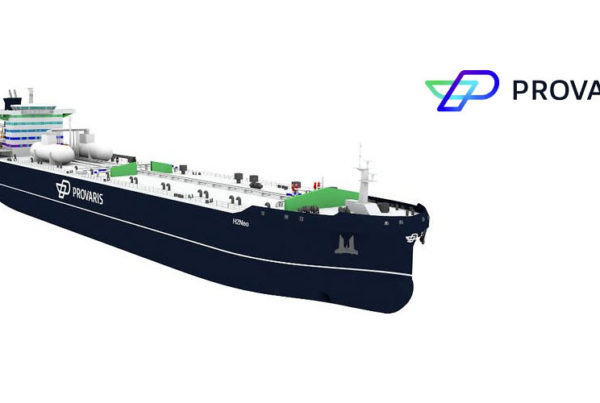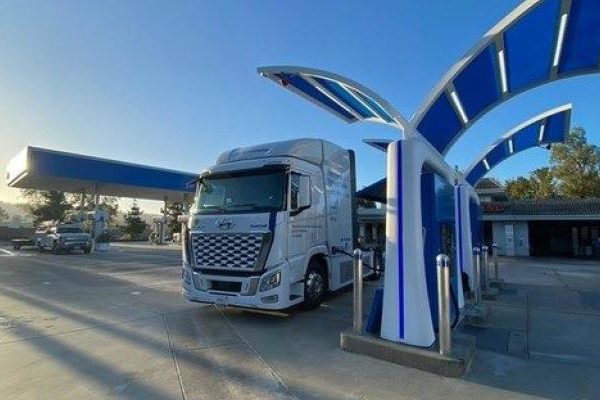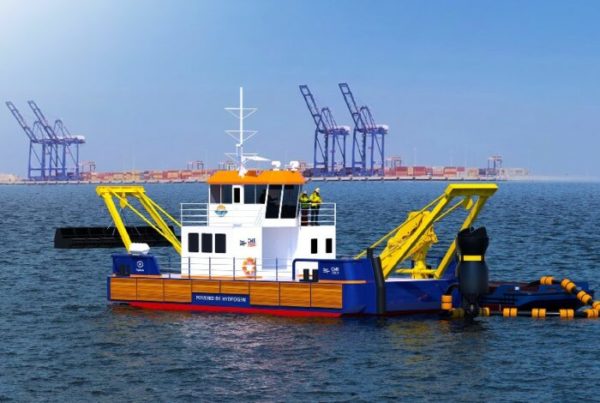
The North African country could surpass the Iberian Peninsula as a major supplier of green molecules. It has accumulated investments of over 16.4 billion.
The answer to the challenge of decarbonizing Europe seems to be in the southern part of the continent. Although the latitude is still to be seen. Spain, which aspires to become a major player in the hydrogen market, sees immediate competition from its southern neighbor, Morocco, which aims to become a heavyweight in the sector. A study commissioned by the European Commission points out that the North African country could surpass Spain’s production by more than 30% by 2050, reaching a total of 160 terawatts, becoming a significant supplier to the Twenty-Seven by providing over 5% of the continental demand.
Given the geographical proximity between both countries, the study conducted by the German institute Fraunhofer highlights that, despite the close competition, Spain could become the second major hydrogen power in Europe with an electrolysis capacity of over 120 gigawatts by 2050, second only to France. Moroccan exports would only be necessary in a suboptimal scenario, where hydrogen usage becomes widespread across the continent, but the deployment of electrolyzers and renewable generation is not ideal.
The African kingdom’s bet has not been delayed and since 2021 maintains official support for the development of the value chain. A study by the consulting firm Deloitte estimates that only revenues from green hydrogen exports could fully offset the Moroccan trade balance deficits. In May of this year, the French company TotalEnergies announced an investment of 9.4 billion euros in a hydrogen and ammonia project aimed at export to Europe. Subsequently, in June, the state-owned company OCP, responsible for phosphate processing, announced a similar initiative worth 7 billion euros.
“Spain and Italy have the possibility of being an entry point for North African production,” says Emilio Nieto, Director of the National Hydrogen Center, a public consortium composed of the Ministry of Science, Innovation, and the Junta de Castilla-La Mancha. However, the update of the ‘new’ National Integrated Energy and Climate Plan (PNIEC) or the Hydrogen Roadmap makes no mention of imports.
Taking advantage of Moroccan potential is contingent on the construction of an infrastructure that physically connects both the Iberian Peninsula with North Africa and the rest of Europe. In this sense, Spain and France’s plans with H2Med and the main network projected by Enagas for 2040 stand out, which already incorporates physical interconnections with Morocco centered in Tarifa (Cadiz). The transport of hydrogen through pipelines, as the Spanish operator points out, reduces energy losses and avoids oversizing the electrical infrastructure to achieve the same amount of hydrogen at the destination. In 2022, Cepsa had also announced the construction of a hydroduct to enable the import of hydrogen from Morocco to its San Roque refinery.
The authors of the report emphasize that this is an opportunity, not necessarily a threat. “In all projected scenarios, Spain emerges as a net hydrogen exporter. For the country, it can be beneficial to import electricity as well, to deal with short-term fluctuations and seasonal variations,” says Khaled Al-Dabbas, one of the researchers, to CincoDías.
Major companies in the sector also qualify these scenarios. “The fact that Morocco may have better wind and solar resources than Spain doesn’t mean it will develop more hydrogen production,” says Daniel Fraille, Director of Policies at HydrogenEurope, a center that represents over 250 companies with interests in this energy vector, including Enagas and Cepsa. This expert highlights that official support, regulatory environment, and the industrial value chain are “just as important or even more important than the pure economic model of a project.”
The study published by the European Commission also highlights that domestic hydrogen production would have a lower cost than imports, even if they come through pipelines. According to the projected scenarios, shipments from Africa would only make sense if “the deployment of renewable energies is not optimal or is limited.”
Avoiding the Same Mistakes
The good news, highlighted by the report requested by Brussels, is that “the decarbonization of the European industry is possible” thanks to the combination of electrification and the rapid deployment of hydrogen-based solutions. However, even when the African potential for green hydrogen production is considered an opportunity rather than a threat, experts point out the importance of learning from European mistakes.
“The ideal situation is that we don’t always do the same thing. It’s important to work so that production plants are close to where hydrogen is consumed,” comments Nieto. The danger, emphasized by this expert, is that it’s “more profitable to send hydrogen to Germany than to the Spanish industry” and to use Moroccan production to meet local demand. The projection made for the European Commission highlights that Moroccan exports could satisfy between 80% and 90% of local demand.
Beyond Spain, the European key is to avoid making the same mistakes again. “Despite the benefits in cost, there’s an inherent risk of dependence on external energy sources. We’ve learned in these years the importance of resilience and reliability in energy strategies,” points out Al-Dabbas in reference to the recent energy crisis triggered by Russia’s invasion of Ukraine.
Rising Aids
Green Subsidies. Official subsidies for clean hydrogen production have reached $280 billion so far in 2023, according to a Bloomberg report. In total, 44 countries have a defined strategy for the development of this fuel.
Biden’s Plan. The United States surpasses the rest of the countries, as Washington has provided 48% of all aids. European support is 27% less than the American, as stated in a research report. In addition to the amount of subsidies, companies are urging Brussels to mimic the bureaucratic ease with which they operate in the United States, as well as the lower regulation regarding energy generation.
Companies. European companies lead the list of hydrogen-related announcements. Norwegian company NEL, French company Engie, and Anglo-Dutch company Shell are the top three firms with the highest involvement in this industry, accounting for just over 5% of the total global announcements.
Spain. Enagas and Iberdrola are among the top ten most relevant companies in terms of the number of projects, according to the BloombergNEF study.
SOURCE: cincodias.elpais.com
By. Leandro Hernández
Translated by: Catherine Lafaurie FCW
Read the most up to date Fuel Cell and Hydrogen Industry news at FuelCellsWorks




